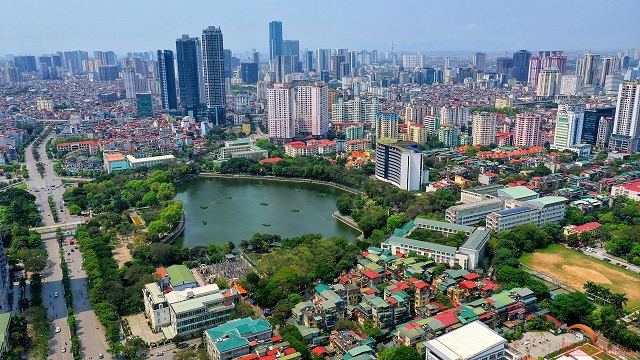Vietnam boosts green growth for sustainable development
Vietnam targets to slash greenhouse emissions by at least 15% in 2030.
Green growth is seen as a key approach for Vietnam to realize the goal of sustainable development with the people at the core, and eventually prosperity.
| A corner of Hanoi. Photo: Le Viet |
Prime Minister Pham Minh Chinh stressed the move as he signed off decision No.1658/QD-TTg approving a national strategy on green growth in the 2021-2030 period, with a vision to 2050.
The decision also stressed the fact that green growth would accelerate the economic restructuring process along with revising the growth model, in turn enhancing competitiveness and resilience against external shocks.
“By embarking on green growth, Vietnam would be closer to the realization of the socio-economic development for the 2021-2030 period,” he added.
As the country sets sight on becoming a carbon-neutral and green economy, it targets to slash greenhouse emissions by at least 15% in 2030 against the level recorded in 2014; and 30% by 2050.
Other key targets include the proportion of renewables out of total energy supplies of 15-20%; digital economy to make up 30% of the GDP; or forest coverage of 42%.
To realize these goals, Vietnam is set to continue promoting a green economy and adopting a circular economic model by effectively utilizing natural resources and energy based on the foundation of science and technology.
“Applying digital technologies and digitalization would further mitigate negative impacts from economic activities on the environment,” added Chinh.
The strategy also places a strong focus on raising people’s living standards and their resilience against climate change, ensuring fairness in the distribution of benefits from the economic development process.
By 2030, the human development index (HDI) would be over 0.75 from the current 0.704, taking Vietnam to the group of countries with high human development level set by the UN Development Program (UNDP); 100% of provinces/cities would have air quality control program, and at least 70% of the population would use clean water under standards of the Ministry of Health.
Prime minister Chinh expected greater efficiency in the use of energy across economic sectors, especially in industrial production, transportation, and trade.
In this context, a modern and organic agricultural sector is essential to ensure social welfare and sustainable development, along with speeding up the urbanization process towards smart and sustainable cities with a high level of climate resilience.
“Vietnam would gradually limit the development of economic sectors with high carbon emissions to prioritize more environmentally-friendly industries,” stated Chinh.
Chinh assigned the Ministry of Planning and Investment to draft an action program on green growth in the 2021-2030 period, which should be incorporated into socio-economic plans at city/provincial levels.
At the same time, the Government would continue to finalize a framework on the adoption of principles from the circular economy in the management of industrial parks or economic zones; raising public awareness on green growth; promoting new business models under the green economy.
The World Bank considers Vietnam’s pursuance of green growth as the right step towards sustainable development. “Digitalization and Vietnam’s transformation into a green economy would help boost the country’s productivity by one to two percentage points,” said World Bank Country Director for Vietnam Carolyn Turk. “The pursuit of a green recovery could deliver growth built on resource efficiency and business innovation that promotes transition to a circular economy. This will require innovative policymaking, prompting government officials to consider new examples and ideas,” stated the ADB. |













